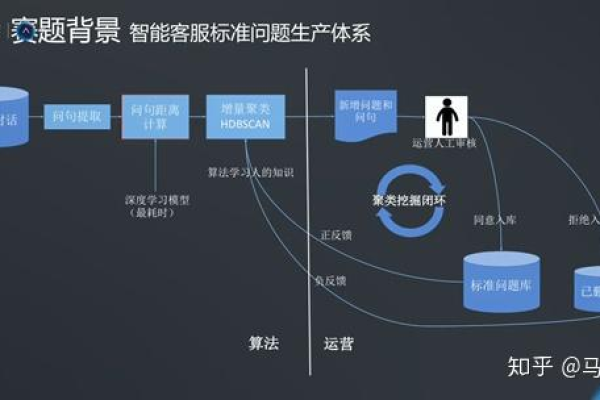上一篇
您想探索如何构建一个高效的问答系统吗?
- 行业动态
- 2024-10-07
- 1
问答系统的源码通常包含问题解析、答案检索和生成等模块,具体实现因系统而异。
创建一个问答系统涉及多个组件和技术,包括自然语言处理(NLP)、信息检索、数据库管理等,这里提供一个基于Python的简单问答系统示例,使用一些常见的NLP库如nltk和scikitlearn。

环境设置
确保你已经安装了以下Python库:
pip install nltk scikitlearn pandas
数据准备
假设我们有一个包含问题和答案的数据集,存储在一个CSV文件中,文件名为qa_data.csv,格式如下:
question,answer "What is your name?", "My name is Assistant." "How old are you?", "I am 21 years old." ...
代码实现
以下是一个简单的问答系统的实现:
1. 导入必要的库
import nltk from sklearn.feature_extraction.text import TfidfVectorizer from sklearn.metrics.pairwise import cosine_similarity import pandas as pd import numpy as np from nltk.corpus import stopwords import string
2. 数据加载与预处理
读取数据
df = pd.read_csv('qa_data.csv')
预处理文本
stop_words = set(stopwords.words('english'))
def preprocess_text(text):
# 转换为小写
text = text.lower()
# 去除标点符号
text = text.translate(str.maketrans('', '', string.punctuation))
# 分词
words = nltk.word_tokenize(text)
# 去除停用词
words = [word for word in words if word not in stop_words]
return ' '.join(words)
df['question'] = df['question'].apply(preprocess_text)
df['answer'] = df['answer'].apply(preprocess_text)
3. 向量化表示
初始化TFIDF向量化器 vectorizer = TfidfVectorizer() 训练向量化器并转换文本 X = vectorizer.fit_transform(df['question']) y = vectorizer.transform(df['answer'])
4. 相似度计算与回答查询
def get_answer(question):
question = preprocess_text(question)
q_vec = vectorizer.transform([question])
# 计算余弦相似度
cosine_sim = cosine_similarity(q_vec, X)
best_match_idx = np.argmax(cosine_sim[0])
return df['answer'][best_match_idx]
测试问答系统
test_question = "How old are you?"
print(f"Question: {test_question}")
print(f"Answer: {get_answer(test_question)}")
运行示例
将上述代码保存为一个Python文件(例如simple_qa_system.py),然后在命令行中运行:
python simple_qa_system.py
扩展与优化
1、更多数据:使用更大的数据集进行训练,以提升模型的性能。
2、高级模型:考虑使用深度学习模型,如BERT或Transformer,以获得更好的语义理解能力。
3、用户反馈:通过用户反馈不断改进问答系统的回答质量。
4、多轮对话:支持上下文相关的多轮对话。
这个简单的问答系统只是一个入门级的示例,实际应用中可能需要更多的优化和功能扩展,希望这对你有所帮助!
以上就是关于“问答系统 源码”的问题,朋友们可以点击主页了解更多内容,希望可以够帮助大家!
本站发布或转载的文章及图片均来自网络,其原创性以及文中表达的观点和判断不代表本站,有问题联系侵删!
本文链接:http://www.xixizhuji.com/fuzhu/12502.html


